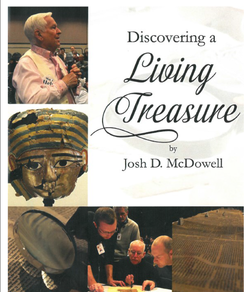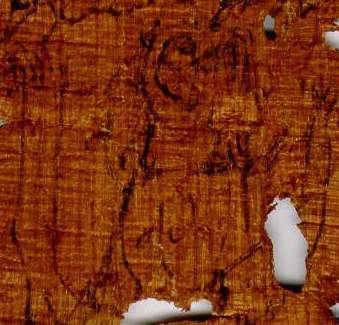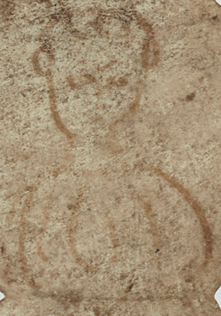Oxyrhynchus Papyri (Subtitled) from firebird films Ltd. on Vimeo.
 Several months ago, I blogged about an event called "Discover the Evidence" that took place on 5-6 December 2013. Readers may remember that it was at this event that hundreds of papyrus fragments were apparently extracted from mummy masks by Scott Carroll, a controversial American collector of antiquities. It was reported that "each attendee actually participated in the extraction of papyri fragments [sic] from ancient artifacts." [This last quote was taken from Christian apologist Josh McDowell's website before it was later quietly deleted.]
A reader of this blog has brought to my attention a booklet titled "Discovering a Living Treasure," which has now been made available through Josh McDowell's website. For those who are following my posts about the Green Collection, Scott Carroll, mummy masks, cultural artifacts and heritage, ethical practices in the acquisition and use of papyri and other antiquities, and so on—this piece will be of interest to you. The booklet, authored by Josh McDowell, gives many more details about the "Discover the Evidence" event, the artifacts handled there, and those who were involved (note especially McDowell and Carroll's involvement). We learn that Josh McDowell is now the owner of Christian papyri. We also learn more about how he intends to use them. Readers can take it from here. I think everyone knows how I feel about these issues already. This NT manuscript is interesting for a variety of reason, one of which is the cursive note at the bottom. This is not a continuation of the NT text above, nor has it been deciphered given its ungrammatical characteristics. So, which NT manuscript is this? And does anyone want to take a stab at the meaning and function of the scribbled note?
Update: As several people have pointed out on Facebook, via email, and through the comments here, this is indeed P.Oxy. II 209 (P10). The most exhaustive study of it is the recent article by AnneMarie Luijendijk, "A New Testament Papyrus and Its Documentary Context: An Early Christian Writing Exercise from the Archive of Leonides (P.Oxy. II 209/P10)," JBL 129.3 (2010): 575-596.  Ed. princ. Franco Maltomini, “340. Amuleto con NT Ev. Jo. 1, 1-11,” in Kölner Papyri (P. Köln), vol. 8 (eds. Michael Gronewald, Klaus Maresch, and Cornelia Römer; Opladen: Westdeutscher Verlag, 1997), 82-95. P.Köln 8.340, a long amulet containing both text and images, was designed as a request for healing and protection. It begins by appealing to a lengthy passage of scripture (John 1:1-11), followed by an invocation of the name of God, requesting that he send his angel to chase away sickness, evil spirits, the evil eye, and “every snare of humanity.” I am currently working on this amulet, which has a number of interesting features. Here is the text, following the NT portion, in translation (my own): "I call upon you God, and Mary the God-bearer, Father of our Lord and Savior Jesus Christ, that you might send your angel who presides over the healing of those who wear this adjuration [amulet] and implore him to chase away each and every illness and infirmity, every unclean spirit, every evil eye, every snare of humanity. I banish you by the glorious name of the Lord forever and ever. Amen, amen, amen.” On the backside—in this case, we cannot speak of recto and verso because overlapping patches of papyrus strips preclude such identification—there are two drawn figures, both standing, depicted as praying in the orantes position, i.e., with their hands raised. In this post, I would like to correct the interpretation about one of these figures by the editor, F. Maltomini. According to Maltomini, there is a face superimposed onto the chest of the second standing figure.[1] He describes it as lacking hair, eyebrows, eyeballs, mouth, chin, and neck. The eye sockets are described as tiny and round and the nose as being constructed by a line beginning at the top part of the forehead extending down the bottom of the face and finally curving off to the right. Maltomini wrestles with the identification of this “face,” and concludes by suggesting that it is “probably the person for whose healing the two stand praying their prayers.”[2] The problems associated with the identification of this superimposed “face,” however, can be easily resolved: what Maltomini describes as a “face” is clearly, in fact, an image of a woman’s breasts. This would explain, then, why this “face” lacks hair, eyeballs, eyebrows, mouth, and chin, and why the "nose" is represented by a long curved line. This identification is further secured by the fact that the standing figure has long, wavy hair; even the editor admits that this must be a female figure on this basis. The breasts are somewhat similar in appearance to the breasts depicted in another Christian amulet, P.Oxy. 8.1077, but are drawn at more of an angle. Does the inclusion of a female figure suggest that the owner of this amulet was a woman? Perhaps it does, although it is difficult to say who the first (presumably male) figure might be and his relation to the female figure. In my study alone I have see at least two other amulets that were clearly owned by women (P.Oxy. 8.1077 and P.Oxy. 8.1151). Nevertheless, the participial phrase τὸν φοροῦντα ("the one who bears" [the amulet]) in ll. 41-42 of this amulet seems to preclude the possibility of a female owner of the amulet, since it is masculine. One note on the NT text. If the owner of our amulet purchased it from a ritual specialist (i.e., a church leader), then this may mean that the text was copied from an actual manuscript, although we have no way of proving this, of course. Alternatively, since the Gospel of John was apparently popular in Egypt—for example, a high number of manuscripts of John were discovered at Oxyrhynchus—its text may have been part of the oral culture of the Christian community in which this amulet was produced and used. Either way, P.Köln 8.340 contributes to our knowledge of Egyptian Christianity in more ways than one and it, like many amulets, deserves the attention of early Christian scholars. [1] Maltomini’s full description of this figure runs as follows: “Al di sotto di questa figura è rappresentato un orante. Il viso, appena abbozzato, si sovrappone a parte del petto della figura precedente. La linea del contorno non appare chiusa in alto sulla testa; assenti i capelli; gli occhi sono piccoli e rotondi, senza pupille e senza sopracciglia; il naso è constituito da una lunga linea che si inizia nella parte alta della fronte, scende dapprima verticale per poi piegare verso destra. Bocca, mento e parte del collo sono scomparsi in una lacuna. Il tronco è rettangolare; di alcune linee irregolari che vi appaiono all'interno non so ravvisare il significato preciso (panneggio?). Le braccia sono sollevate nel gesto della preghiera, più distese di quelle del primo orante, e vengono ad incorniciare la figura centrale. Non si distinguono gli arti inferiori” (Maltomini, “340,” 95).
[2] My translation of “…probabilmente la persona per la cui guarigione…i due oranti levano la loro preghiera,” (Maltomini, “340,” 95). |



